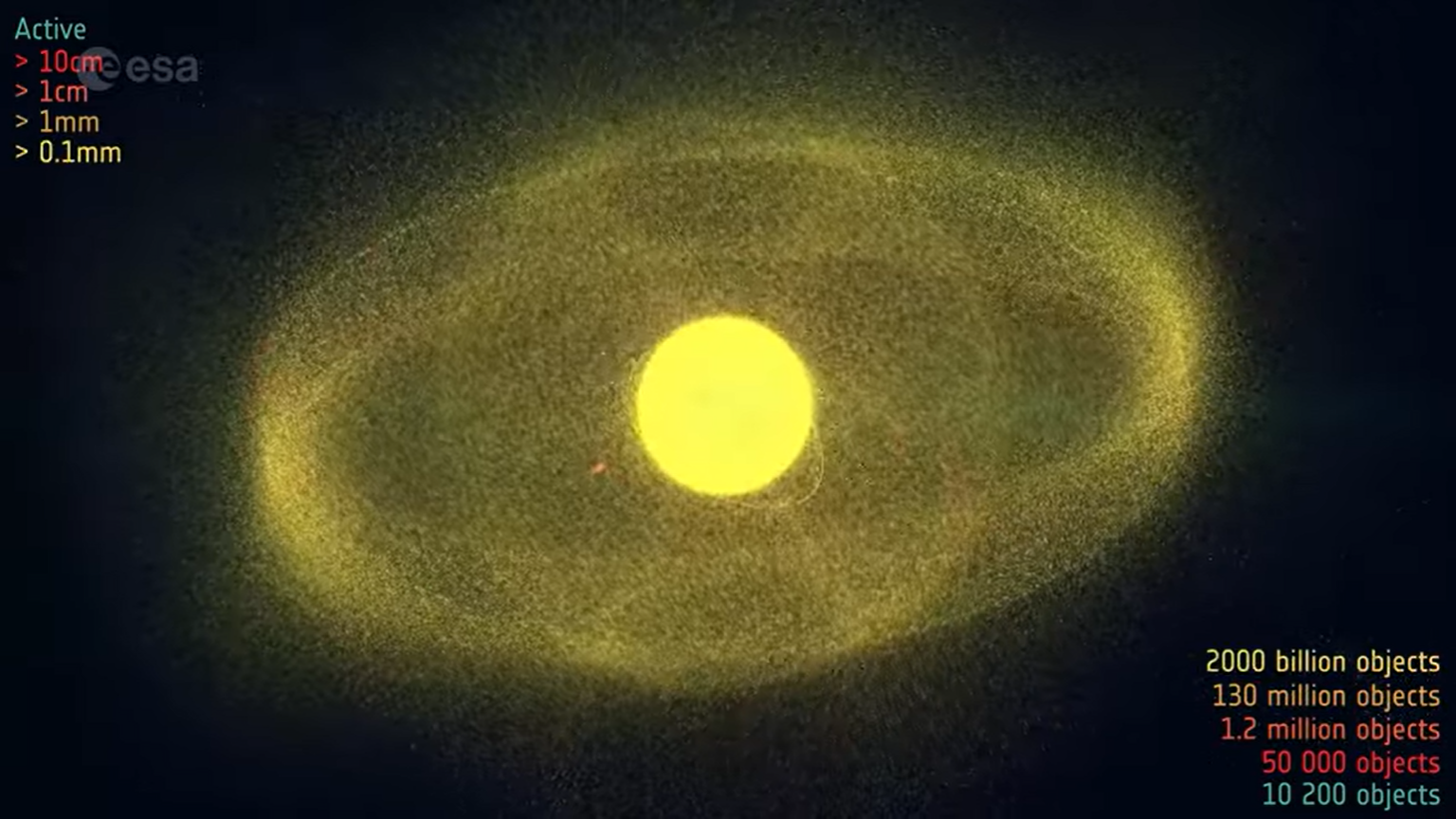Debris Concerns Delay Discovery Launch Until July
CAPE CANAVERAL - NASA'sfirst shuttle mission since the Columbiaaccident will be delayed until July because of fears that ice could shake freefrom Discovery's external fuel tank, triggering another deadly disaster.
NASA halted launchpreparations at launch pad 39B on Thursday. Discovery will be hauled back tothe Vehicle Assembly Buildingto fix the 15-story fuel tank as early as next week, according to a NASAofficial familiar with the decision. NASA will announce the decision today.
The extra time also willallow NASA to deal with other technical problems that have cropped up recentlyat the pad.
"I don't think we'reready to fly yet," the official said. "Is it disappointing? Yes. Butis it the right thing to do? Yes."
NASA had hoped to launchDiscovery on a test flight to the International Space Station during a 13-daywindow that extends from May 22 to June 3. The agency now will target liftoffduring the next available launch period, which extends from about July 14 toJuly 31.
NASA engineers this weekcompleted a review of debris sources on the external fuel tank, which wasredesigned after the Columbiaaccident and holds about 500,000 gallons of supercoldpropellants.
Three areas remain aconcern, including a 70-foot long liquid oxygen propellant line that runs alongthe outside of the tank. Engineers fear that ice could build up near the top ofthat line, break free during launch and smash into the orbiter's heat shield.
Breaking space news, the latest updates on rocket launches, skywatching events and more!
Columbia and its seven astronauts were lost in 2003 when a1.6-pound wedge of foam insulation broke free from the shuttle's external tank,punching a hole in the left wing. The breach enabled hot gas to get inside theship during re-entry, and Columbia disintegratedabove Texas.
The foam wedge has beenreplaced by a heater system. NASA has modified foam insulation in several otherareas of the tank, including the 17-inch wide propellant pipe. The changesaround the pipeline were designed to keep condensation from pooling andfreezing into large chunks of ice.
Ice dangers persist
Data from a recentfuel-loading test showed significant amounts of ice still could build up nearthe top of the pipeline in humid weather, NASA deputy shuttle program managerWayne Hale told reporters last week.
"We will not launch ifwe think there is a concern for an unacceptable amount of ice to hit theorbiter," Hale said.
NASA planned to add a heaterto the propellant line to eliminate the problem, but that modification was notexpected to be ready until the third post-Columbia flight, which is scheduledfor December.
This week, workers at the Michoud plant outside New Orleans began installing a pipeline heater on the tankslated for the third flight, although some qualification tests remain, LockheedMartin spokesman Marion La Nasa said.
NASA will either install apipeline heater on Discovery's tank or replace the tank with another that isequipped with one of the devices. That work can't be done at the launch pad. Itmust be done in the assembly building.
NASA also is wrestling withother technical problems:
Enginecutoff sensors
Sensors that serve the samepurpose as an automobile gas gauge did not work during a recent external-tankfueling test. Engineers still don't understand why the sensors acted erratically,said Jessica Rye, a Kennedy Space Centerspokeswoman.
The sensors gauge the amountof propellant left in the 15-story tank during a shuttle's climb to orbit. Theyalso are designed to shut down the shuttle's three main engines if they sensethe tank is out of fuel.
A malfunctioning sensorcould trigger a premature engine shutdown in flight, which could forceastronauts to attempt a risky and unprecedented emergency landing at either KSCor overseas runways.
"We would not launch ifthey were not working," Hale said last week.
Heat-shield blankets
During routine launch preps,hydraulic fluid dripped on launch pad equipment. High winds then blew the oilyfluid onto thermal protection blankets that cover hump-like engine pods on thetail of the orbiter.
NASA might have to replacethe blankets, a time-consuming job.
The postponement raisesquestions about whether NASA can complete two test flights in time to resumeconstruction of the space station as planned in December.
Daylight launches
The space agency aims tolaunch its next two flights during daylight and at times when the external tankwill be jettisoned on the sunlit side of Earth. The idea is to capture clearpictures of any launch debris and to make sure changes to the external tank weresuccessful. The windows that opened in May and July meet those requirements.
The next available windowafter that is in September, but the scheduled launch of a fresh crew to thestation on a Russian rocket that month could narrow the available shuttlelaunch period to a mere five days.
Published under license from FLORIDA TODAY. Copyright ? 2005FLORIDA TODAY. No portion of this material may be reproduced in any waywithout the written consent of FLORIDA TODAY.
Todd Halvoron is a veteran aerospace journalist based in Titusville, Florida who covered NASA and the U.S. space program for 27 years with Florida Today. His coverage for Florida Today also appeared in USA Today, Space.com and 80 other newspapers across the United States. Todd earned a bachelor's degree in English literature, journalism and fiction from the University of Cincinnati and also served as Florida Today's Kennedy Space Center Bureau Chief during his tenure at Florida Today. Halvorson has been an independent aerospace journalist since 2013.
